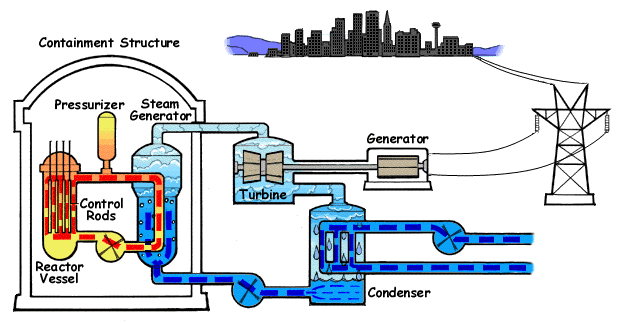Today (November 28, 1954) is the anniversary of the Nobel Prize-winning Enrico Fermi who built the world's first nuclear reactor.

Enrico Fermi was born on September 29, 1901, in Rome, Italy. His father,
Alberto Fermi, worked in the railway industry. They belong to the Christian
Catholic sect. He had a brother (Giulio) and a sister (Maria). He became very
interested in physics at an early age. He studied physics at the University of
Pisa and elsewhere in Europe, and was a professor at the University of Rome. He
received his doctorate at the age of 21 for his radiological studies. In
radiology since 1934, he has developed the beta decay principle. Enrique, along
with his brother in his youth, would break down and disassemble all the
machines available at hand. When his brother fell ill and died in 1915, he
became insane. She wandered around before the hospital where her brother died.
That's when he read physics books. The author then read Enrico's university
entrance exam essay in his seventeenth century and wondered if he could get a
doctorate for that essay.


Fermi also conducted an initial study of the flow of electron atoms and
their spectral separation. Starting with the rotating electron in the outer
orbit of an atom, Fermi advanced his research to the nucleus. That was the
turning point in his life. Strushman, a physicist living at the time, said that
the nucleus could split apart. After reading this, Fermi began to think about
the occurrence of Chain Reaction. This is the field in which he received the
Nobel Prize. At the age of 22, Fermi revealed the secret of nuclear power in
Einstein's equation. Fermi also studied the slow neutron used in nuclear
reactors.


In recognition of Enrico's scientific prowess, Benito Mussolini
presented him with the highest award in the world, the "Excellence
Award", meaning "Scientist". Fermi was once attending a meeting
of scientific institutes. Mussolini was the keynote speaker at the meeting. All
the scientists came and got off the car, and Fermi just walked around very
simply, dressed very casually. The guard refused to let Fermi in, who looked
like ordinary people. Fermi did not stand up to the wrestler who refused. Fermi
did not say that he was and that Mussolini knew me well. Because Fermi knew
very well that he was not going to believe her. So Fermi states in his
autobiography that he was allowed by the guard to say, 'I drove Fermi's car,
arrived late for work in the morning, and had to pick up Ayya when I got back.'
This incident speaks to Fermi's simple nature.

Fermi, who played a key role in the Manhattan project, also played a
major role in the installation of the Hanford nuclear reactor. He performed the
first nuclear reaction at the first nuclear reactor in December 1942 at the
University of Chicago. Fermi designed all the calculations correctly and
climbed to the pinnacle of physics of the day. Enrico Fermi received the Nobel
Prize, the highest award in Sweden, for his induction radiation. Like Hitler,
Mussolini followed a racist policy, and Fermi emigrated to the United States
with the Nobel Prize-winning hand in Sweden, fearing that his wife, a Jewish
woman, would be in danger. Then he never went to his native Italy. And Fermi
spent his final days alone.

Fermi was awarded the Matteoxy Medal in 1926, the Nobel Prize in Physics
in 1938, the Jesus Prize in 1942, the Franklin Medal in 1947, and the Rumford
Prize in 1953. He was awarded the prestigious 1946 Medal for Merit for his
outstanding contribution to the Manhattan Project. He was also elected a
foreign member of the Royal Society in 1950. Fermi's name is also on the list
of Italy's most famous artists, scientists and historical figures. To this end,
a plaque erected in the Basilica of Santa Croce, known as the Italian Disaster
Temple, is a monument to Fermi. Fermi was also named one of Time magazine's Top
100 Men of the Twentieth Century by 1999. Fermi was considered an extraordinary
figure by 20th-century physicists. He excelled both theoretically and
experimentally. Physicist historian CB Sino says that if Fermi had been born a
few years earlier, he could have imagined that he would have discovered
Rutherford's nucleus and developed the theory of hydrogen atomic warfare.


Fermi was known as an inspiring teacher. He is also known for his focus,
simplicity and careful preparation for his lectures. His sermons were later
booked. Research papers are housed at the University of Chicago. Many objects
are named after Enrico Fermi. The Fermi Laboratory particle accelerator was
renamed in 1974, including the Physics Laboratory in Pattavia, Illinois, one of
the United States. The Fermi gamma-ray space telescope was renamed in 2008 in
honour of Fermi's cosmic range research. Nuclear power plants under the names
Fermi 1 and Fermi 2 were started in Newport, Michigan. The Enrico Fermi Nuclear
Power Plant at Trino Versailles, Italy, and the RA-1 Enrico Fermi Nuclear
Reactor at Argentina are named after him. In honour of Fermi's contribution to
the scientific community, a synthetic element extracted from nuclear tests in
1952 was named Bromium. He was thus one of the 16 scientists named for the
elements.


Since 1956, the US Atomic Energy Agency has created the Fermi Award, the
highest honour in Permits. Well, known scientists such as Otto Ann, Robert
Oppenheimer, Edward Teller and Anshu Bethe have received the award. He is also
widely acclaimed for his contributions to quantum theory, nuclear physics,
particle physics, and statistical mechanics. Enrico Fermi, who built the first
nuclear reactor, passed away on November 28, 1954, in Chicago, USA at the age of
53 due to stomach cancer. Two students who worked with him died of cancer.
Source By: Wikipedia
Information: Dr. P. Ramesh, Assistant Professor of Physics, Nehru Memorial
College, Puthanampatti, Trichy.



.jpg)
No comments:
Post a Comment